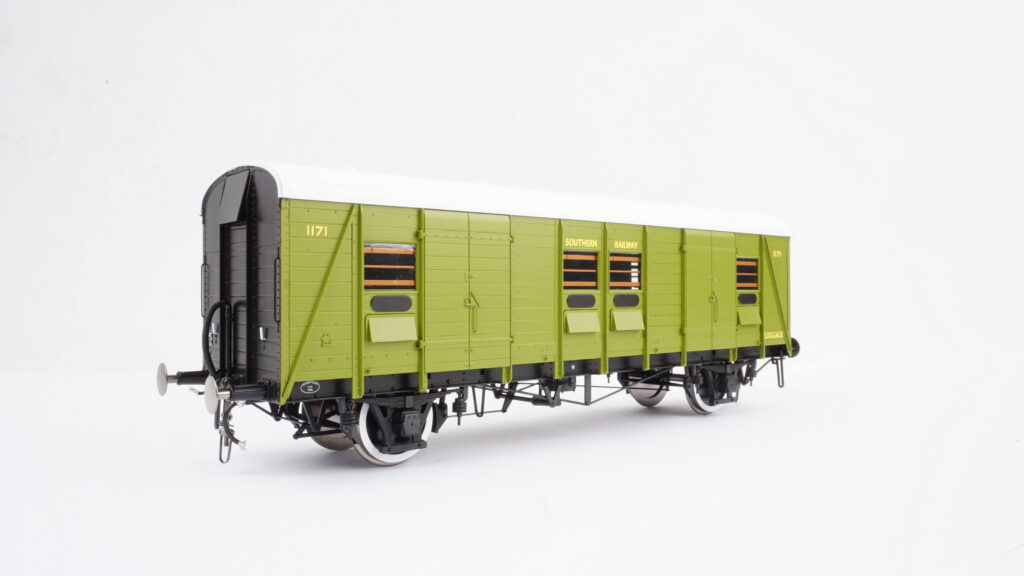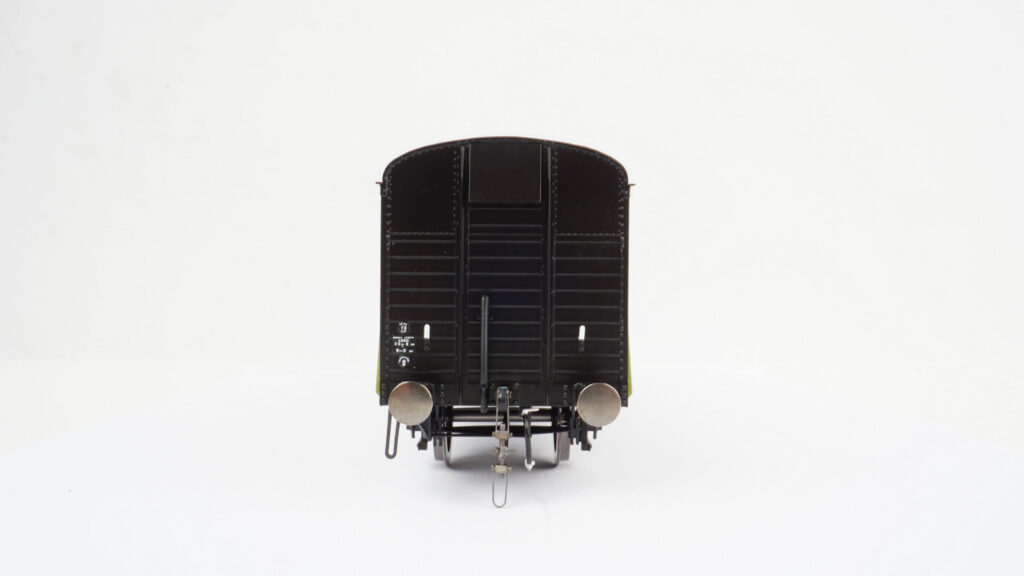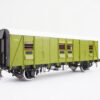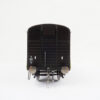As a collective group of railway vehicles these versatile general purpose vans were designed to transport passenger luggage, and time-sensitive items such as mail, parcels, newspapers, fresh produce such as fish, fruit, poultry and even acting as pigeon carriers. Their main characteristic was that they were self-contained vehicles having no accommodation for a guard, but running extensively across Southern metals with routes connecting London to the south coast, and much further afield including the far south west of England, and all the way to the north of Scotland.
During WW2 they appeared across a multitude of southern England lines aiding the Allied war effort to secure Europe including GWR’s Bristol-Weymouth route, the Somerset & Dorset, (SDJR) connecting Bath Green Park, Bristol Temple Meads, the old Midland Railway line to Derby and to the north of England, Castleman’s Corkscrew and the Wimborne-Salisbury loop, the Bristol to Southampton line, the Cheltenham to Winchester Midland and South Western Junction Railway (M&SWJR) route, as well as access to south coast ports. Such entry points provide a perfect opportunity for model railway enthusiasts of other Big Four regions to acquire these unique set of utility vans.
Representing a class of multi-purpose non-passenger carrying coaching stock, Southern Railway’s Passenger Luggage Vans (PLV), Parcels & Miscellaneous Vans (PMV) and Covered Carriage Truck (CCT) utility vans were extremely robust and well-built, lasting a good half century from their first appearance in the early 1930s until the 1980s; the very first built by Southern were based on an old SECR vehicle during the 1920s. Built to a standard design with only two basic variants – the luggage van and the Covcar with end doors – they catered for almost all traffic over six railway periods of eras 3 to 8. They eventually saw out their revenue earning days in 1986 in a variety of functions such as departmental engineers’ vehicles.
However, in 1951 Passenger Luggage Vans (PLV) – they were by far the most numerous type of utility vehicle – were redesignated Parcels & Miscellaneous Vans (PMV) by British Railways as the volume of luggage handled on specialist services began to wane, even though paid for holidays ensured the railway companies coped with very busy summers. However, the old Edwardian mantra of upscale travellers taking everything bar the kitchen sink on their stopovers had rapidly gone out of fashion in austerity led post-war Britain.
Whatever their actual designation, these utility vans in their prime accompanied Southern Railway/BR(S)’s premier named train services from Continental boat trains (some vans even had roof brackets for holding wooden destination boards), the Atlantic Coast Express (ACE), Bournemouth’s holiday trains, Southampton’s prestigious Ocean Liner Expresses, and the famous Pullman trains such as the Golden Arrow operating out of Victoria. If you’re intrigued by the railway luggage story and the various railway companies’ involvement in this veritable industry, there’s several informative published blogs recounting its development well worth a read.
A short history of railway luggage
Continental Travel: Luggage in Tow
Southern’s utility vans also looked good too. The PLV/PMVs were based on four diagrams 3101, 02, 03 and 04; constructed of wood uppers appearing in planked, uneven planked and plywood built versions (even ten experimental plastic sided versions weighing in at just 10 tons) – the other Big Four railway companies preferred steel-sided vehicles built on wooden frames. Their contribution to the Night Ferry train, for instance, was always going to get noticed. The three 4-wheeled guards vans that shared the graceful lines and the metallic blue livery of the Wagons-Lits Type F Sleepers – colours that reflected a mixture of gooseberry, blackcurrant and rhubarb pastels of the French Azur coast.
The original Southern named Covcar vehicle (later CCT in BR parlance) with large end loading doors were built to Diagram 3101. The Covcar were used to transport smaller road vehicles, but most cars, moved by the southern based railway company, were on a fleet of seventy-five 14/15 ton motor car trucks built in a batch between December 1932 and May 1933. Yet moving cars by rail came to embody the inter-war period when large numbers of private cars were transported by rail – road networks, aside the new ‘A’ classified highways, were still relatively poor – and symbolised by a wealthier traveller cohort who had the time and the money to take their cars with them on British and European holidays.
Southern Railway/BR(S) with its fleet of utility vans was uniquely positioned to handle this lucrative cross-channel business, often combining it with the volumes of holiday luggage that invariably accompanied cars. In those days car boot space tended to be somewhat restricted; photographs from a raft of sporting and touring car manufacturers showcasing luggage strapped to the rear of the vehicle abound. The railway company clearly responded to such business opportunities particularly with the advanced movement of personal holiday luggage. They were moved by rail and often delivered by continental partner railway companies such as NORD/ETAT/SNCF to addresses where travellers were staying at.
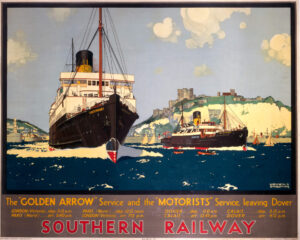
Continuing the holiday and leisure theme there was even a special batch of fourteen vehicles with white-stencilled symbols that were reserved specifically for the use of cyclists travelling to and from the Continent. Each of these vans were equipped with 24 cycle hooks to accommodate as many bicycles as possible and featured as part of special train charters moving cycling clubs on holiday.

A 1950s BR(S) liveried version appears in Heljan’s issue of vehicles reflecting a long-held cycling heritage with the railway industry. In fact taking the bicycle to France was nothing new and a process SECR had grown very accustomed to. Further west large numbers of tourists were drawn to Brittany using LSWR’s Southampton to St. Malo sailings. The region formed a great holiday ground for the fashionably inclined, but was also a cost-effective destination attracting boat loads of adventurous tourists – men and women – armed with their bicycles.
Heljan’s superb fully decorated and detailed vans will appeal to both Southern and BR era modellers. They come with compensated axels for smooth running, sprung screw link couplings and sprung buffers together with other separately fitted details. Since they reached just about every crook and cranny of the BR network, there won’t be many layouts that can’t find a home for these versatile and highly idiosyncratic utility vans. In short they’re sure to add period realism to any 0 gauge layout.
They will be extremely popular so and as they’re only produced in limited quantities pre-orders are strongly recommended.

